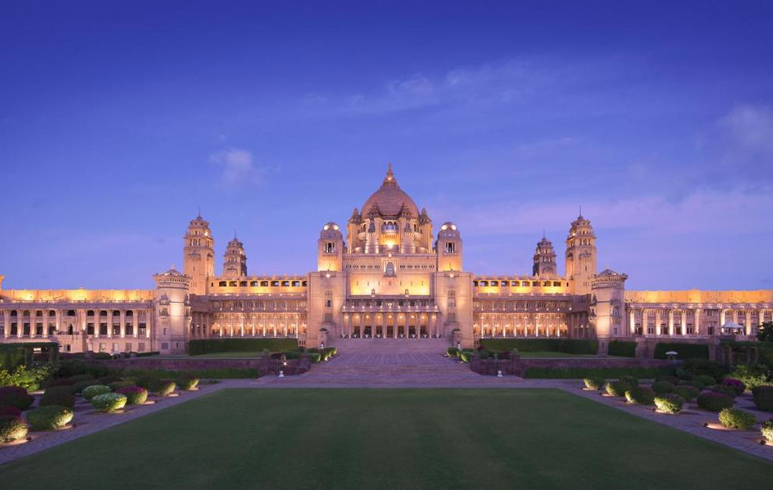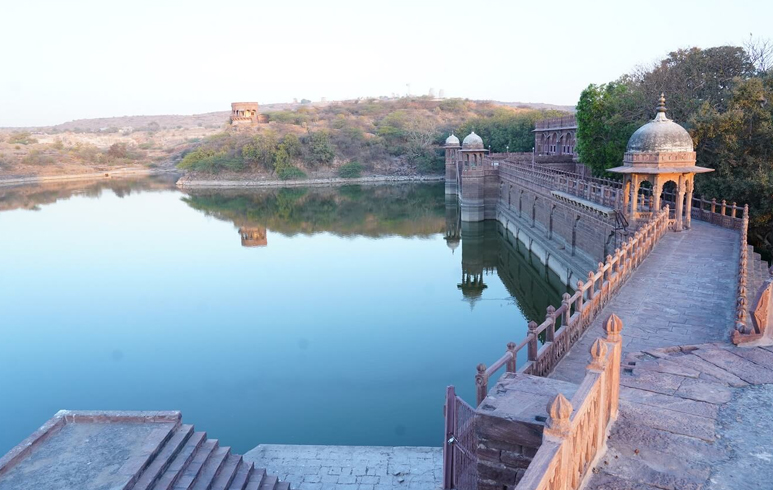About Jodhpur Tour Information
- Tourist Attractions: Umaid Bhawan Palace, Mehrangarh Fort
- Festival Attraction: Desert Festival
- Best Time To Visit: October To March
- MAIN LANGUAGES : Rajasthani, Hindi & English
Jodhpur city is surrounded by a 10 km long wall with eight gates serving as entrances. The new city is settled around this walled area. The Maruthal or 'land of death' , came into life when the Rathores of Kanauj moved in. But the city of Jodhpur was founded by Rao Jodhaji in 1459 AD.
In Jodhpur, the genius of its sculptors comes to life in its exquisite palaces, forts, temples and havelis, which stand testimony to the imperial grandeur. The most alluring part of Jodhpur is the traditional lifestyle, festivity and the smiling people who treasure this former princely state.
Best Places to Visit in Jodhpur

Mehrangarh Fort
Situated on a steep hill, Mehrangarh fort is one of the largest forts in India. The beauty and the grandeur of numerous palaces in the fort narrates a saga of hard sandstones yielding to the chisels of skilled Jodhpuri sculptures.

Umaid Bhawan Palace
The only palace built in 20th century under the famine relief programme, has now been converted into a hotel with some parts being retained as a museum.

Jaswant Thada
The 19th century royal cenotaph is built in white marble, in commemoration of Maharaja Jaswant Singh. Some rare portraits of the rulers of Jodhpur are also displayed here.

Government Museum
The 19th century royal cenotaph is built in white marble, in commemoration of Maharaja Jaswant Singh. Some rare portraits of the rulers of Jodhpur are also displayed here.

Clock Tower & Sadar Market
In the old city, clock tower is a prominent land mark. But main attraction is the Sadar Market. The market has kept alive the old 'haat bazaar' culture.

Mandore
Towards the north of Jodhpur is the ancient capital of Marwar, Mandore. It is just 8 kms from the city. Main attractions of the place are Hall of Heroes with sixteen huge figures carved out of a single rock, the shrine of 330 million Gods and the royal cenotaphs. But one can not miss the caves in crags and the sprawling gardens, which are now shelter place for monkeys and peacocks. Greenery of the place makes Mandore, in true sense, an oasis.

Osian
65-km from Jodhpur, lie ruins of an ancient city called Ossian. This city is famous for Brahmanical and Jain temples, which belong to 8th and 11th century. Surya or Sun temple and the Sachiya temples are famous for their beauty. The 'shikhar' of Sachiya temple is clustered by two rows of turrets, an ambulatory and a large assembly hall with an elaborate ceiling.

Guda Bishnoi :
The villages are inhabitated by the Bishnoi tribe who are staunch believers in the sanctity of plant and animal life. Villages are marked by Khejri trees and deers, which thrive there. 25 kms from Jodhpur.

Balsamand Lake & Palace :
This picturesque artificial lake is 7 kms from the main city. Summer palaces along the embankment and a bird sanctuary has made it a picnic spot.

Sardar Samand Lake and Palace :
Rajasthani village life and vibrant cultural colours come alive as you drive along the 55 kms stretch. The monotony of the drive is broken by Chinkaras and Black Bucks who frisk pass the road.
How to get there?
Air: Jodhpur has its own airport and regular flight services conect the city with other major cities in and around Rajasthan.
Rail: The city is also well connected by the railway lines and trains are available for other major cities in the country from here. The 'Palace on Wheels' also visits this city of royal splendour.
Road: The state transport has bus services from other cities of the state and some services are interstate too.
Places to Stay
The variety of hotels and guest houses in Jodhpur makes one feel at home. Accommodation here is available to suit tourists of every budget. Hotel Karni Bhawan, Ajit Bhawan are heritage hotels. The Rajasthan Tourism Department has the Ghoomar Hotel. The palace hotels options include the Umaid Bhawan Palace, Ratanada Polo Palace, Rajputana Palace. Raj Basera also provides good accommodation facilities. There are low budget accommodations avaialable too.
Fairs & Festivals
The Marwar Festival - Held in October, this festival brings alive the legend, folklore and romantic lifestyle of Rajasthan's rulers.
Climate
Jodhpur has extreme type of climate with temperature range variation being very high. Average rainfall is 32 cm annually. The best season to visit the city is between October and March